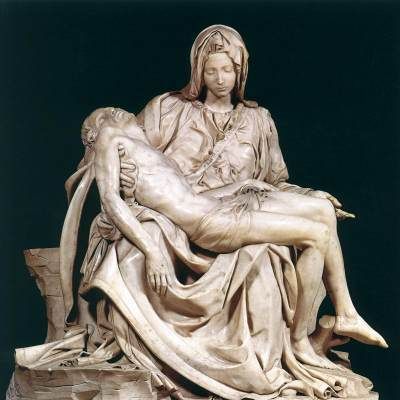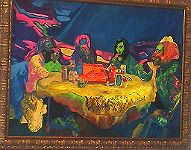 |
Vatican City. I wonder if Ingrid Mattson went there?
[Click on image to see larger version]
[This post has been revised somewhat to include more biographical material, and some information on Mattson's "journeys".]
Ingrid Mattson is a Canadian convert to Islam. She is the President of the Islamic Society of North America. She recently was part of an ecumenical group of Christian, Jewish and Hindu leaders who participated in the traditional National Prayer Service at the National Cathedral following Obama's inauguration.
Mattson's ISNA has been linked with Hamas and terrorist activities. I am not particularly interested in this, since I will always presume that Islamic societies will at some point or other support, or even fund, Jihad-advocating groups, of which Hamas is certainly one.
What interests me is Ingrid Mattson's conversion. When I saw her photograph, I saw immediately that this was a white woman convert. Her face reminds me of countless women I see around me, with the rounded cheeks and small chins, who resemble no Muslim from a Middle Eastern country.
Sure enough, she is originally from Ontario, and her story is as intriguing as any.
She was a philosophy and fine art student at the University of Waterloo and worked as an archivist cataloging art slides in the university library. She traveled to Paris and spent whole days in the Louvre. She calls this episode in her life "The summer I met Muslims". She went to daily mass as a young girl and adolescent. But neither the art nor her Catholic faith was strong enough to keep her with her family.
Right after graduating from university - when she says that she had already started her "personal study of Islam" - she went to British Columbia by train for a tree-planting job for the summer (another one of those "summers".) She took with her Fazlur Rahman's Islam, which she had found in a bookstore a only few days before. She read this book on her cross-country train ride, at the end of which she decided to apply for graduate studies in Islamic studies. And the rest, as they say, is history.
The most intriguing comment she makes is:
[I]n the end, I found even the strongest reaction to a work of art isolating. Of course I felt some connection to the artist, appreciation for another human perspective. But each time the aesthetic response flared up, then died down. It left no basis for action.What a strange thing to say! All those pietàs and Madonnas, all those crucifixions and portraits of saints? All those paintings of the infant Jesus? She left all that to go to Islam?
Which is what happened, as she describes it:
Then I met people who did not construct statues or sensual paintings of gods, great men and beautiful women. Yet they knew about God, they honored their leaders, and they praised the productive work of women. They did not try to depict the causes; they traced the effects.If a young woman so imbued in the most beautiful productions of Western culture and Christianity cannot find the grace to remain in that culture and faith, what is it that pulled her away from it?
She does say that her studies in philosophy eventually led her to Existentialism.
In college, philosophy had brought me from Plato, through Descartes only to end at Existentialism - a barren outcome.I've always said that where there is a barren and empty heart, an unbeliever's heart, which is nonetheless always searching for something, then this heart is easy prey for Islam.
Perhaps this is what happened to her. And this should be a warning to all those in the West. If you take belief, and specifically Christianity, out of the equation, it will get filled with something else, which ultimately will not be the "nothing" of atheism, but could well be the something of Islam.
And Islam is around us everywhere these days. Even Mattson, almost twenty years ago, found enough Muslim influence in her metaphorical and real journeys to make final, fundamental decisions in her life. And how much more susceptible we are now, with Muslim influences that much more dominant in our daily lives.





